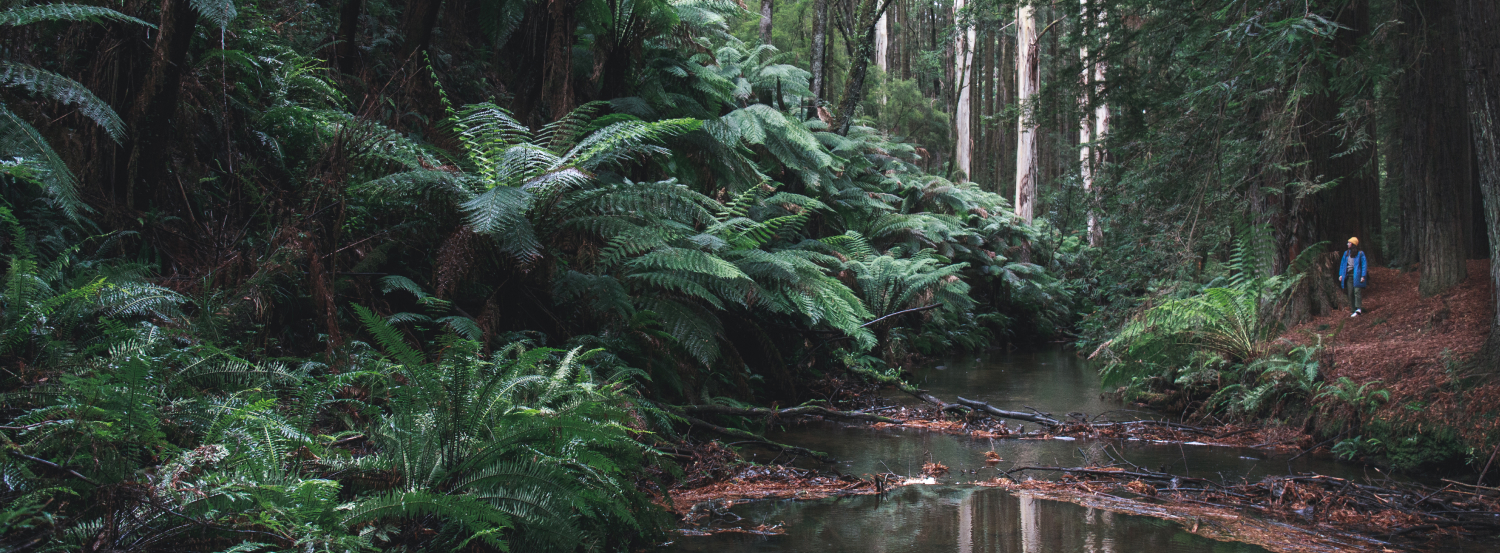We’d like to introduce you to Jess and Fiona, who work on the Bank Australia Conservation Reserve with Greening Australia and Trust for Nature. We’re proud to celebrate their impressive contributions to the environment, communities and nature. Here, they share their wisdom for women and girls in science.
Jess Gardner
Senior Program Officer at Greening Australia

Jess is the Conservation Reserve property manager, which means she is the main point of contact, as well as working on broader initiatives such as community engagement, environmental education, and liaising with all the stakeholders involved in managing the reserve.
How do you manage the reserve?
“We take a science-based approach to managing the reserve, using monitoring to ensure we have the data to back up our decisions”, explains Jess.
“For example, following cool burns by Traditional Owners, we monitor the outcomes from returning to this kind of management regime for the health of the local landscape, so we can apply this information in our decision-making both on the reserve and in similar landscapes in the future.”
How did you start your career in science?
Jess credits growing up on a farm involved in Landcare with inspiring her interest in a career in natural resource management (NRM). Her family fenced off part of the creek and she was amazed to watch species returning following that intervention.
“I spent some time working as a technical lab assistant with the Department of Agriculture, and then went on to do a degree in NRM. I started with Greening Australia in 2005 as a Scientific Research and Extension Officer and have held roles as Senior ecologist and now Senior Program Officer.
“The best part of my job is being outside, surrounded by plants and animals. I’ve spent a lot of time in this part of the world, and you get to know your patch. The most rewarding thing is finding ways for other people to get involved, and seeing what volunteers get out of working with us and spending time in nature.”
Any advice for others interested in a career in science?
“Like anything, you’ve got to love what you do. Keep your eyes on the end goal, that’ll help you stay disciplined.”
Fiona Copley
Senior Conservation Officer at Trust for Nature

How do you manage the reserve?
"A large part of my job is talking to landholders about the significance of native vegetation on their properties, and how to manage it so it stays healthy. On the Bank Australia Conservation Reserve, Bank Australia are the landholder, on behalf of their customers, and my role is to help identify what’s important and how to manage it."
How did your career in science begin?
“My interest in science originated from my love of animals. As a kid, I loved reading books by British naturalist Gerald Durrell. The way he anthropomorphised animals is probably what sparked my interest in making a better world for threatened species.
“I studied zoology and biological science at university. I toyed with the idea of becoming a geneticist or a microbiologist, but realised I felt most strongly about there being whole suites of species we know little to nothing about. I wanted to learn and share insights about species that are commonly dismissed or misunderstood.
“After uni, as a city-dweller, I found it hard to get work, so had to do a lot of cold calling. A group in Shepparton gave me a go working with native vegetation (which was new to me, focussing on plants!), and I gained experience working with landholders. Then I got the job at Trust for Nature and have worked with them for 11 years.
“I like that the Trust for Nature covenants are for perpetuity. Long-term covenants mean long-term relationships, so you build really good knowledge of people and their patches.”
Any advice for others interested in a career in science?
“Keep knocking on doors and eventually one will open. Also make sure you encourage and support each other.”
Read more about International Day of Women and Girls in Science.
The 927-hectare Bank Australia Conservation Reserve in Victoria’s Wimmera region provides habitat for a diversity of native plants and animals including 13 threatened species like the South-eastern Red-tailed Black-cockatoo. In 2017, Bank Australia developed a new ten-year conservation strategy for the reserve in partnership with Greening Australia and Trust for Nature, and the three organisations are now working together to bring this bold vision to life. The project received the Banksia Award for Large Business in 2018.
Customers of Bank Australia are part owners of the reserve.
.webp)








